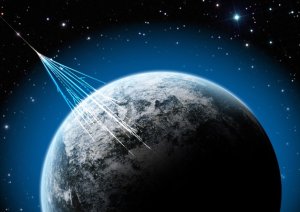

With the Cold War at an end, most of us rest easy at night, knowing that we needn’t fear a nuclear holocaust. However, the transportation of atomic bombs is still an issue that concerns security personnel at the highest levels of government. Taking this conversation even further, we should note that we can actually solve this issue using the basis of particle physics (the same branch of science that made nuclear weapons possible).
Cosmic rays are one of the easiest proofs of Einstein’s theory of special relativity. Take, for example, muons. Muons are like electrons, except that they are a bit heavier and more unstable. They are created when cosmic rays hit Earth’s atmosphere, and most notably, they are part of one of the best detection schemes available for nuclear explosives (this is very new, but exciting, technology).
Wacky Physics:
The issue is this: To create a reliable detector, you essentially want to send particles into a place and detect what happens to said particle after. Muons might work well when searching for nuclear explosives because they (the muons) are scattered about more by heavy atomic nuclei, such as those of uranium and plutonium. Special electronics systems are able to tell the difference in the scattering pattern. These systems can even tell the difference between lead (atomic number 82) and plutonium (atomic number 94). Someone who wants to smuggle uranium or plutonium might shield this material using lead, but that would be no shield against detection by muons.
Additionally, shooting material at nuclear systems can be dangerous. So, when detecting if a bomb is a dud, or determine if it’s nuclear or not, you can use muon tomography to reliably detect it for free, without setting it off. This is a new method of detection is being tested in the London King’s Cross St Pancras station.
